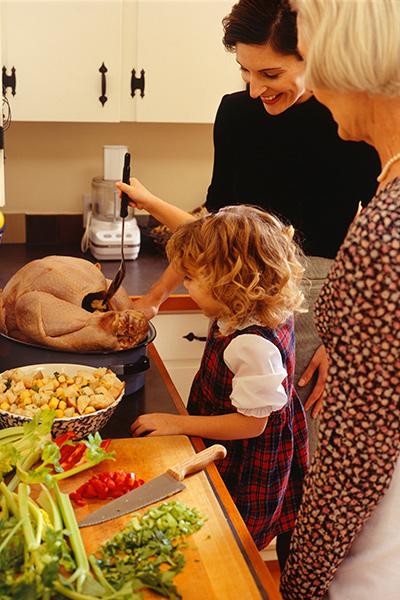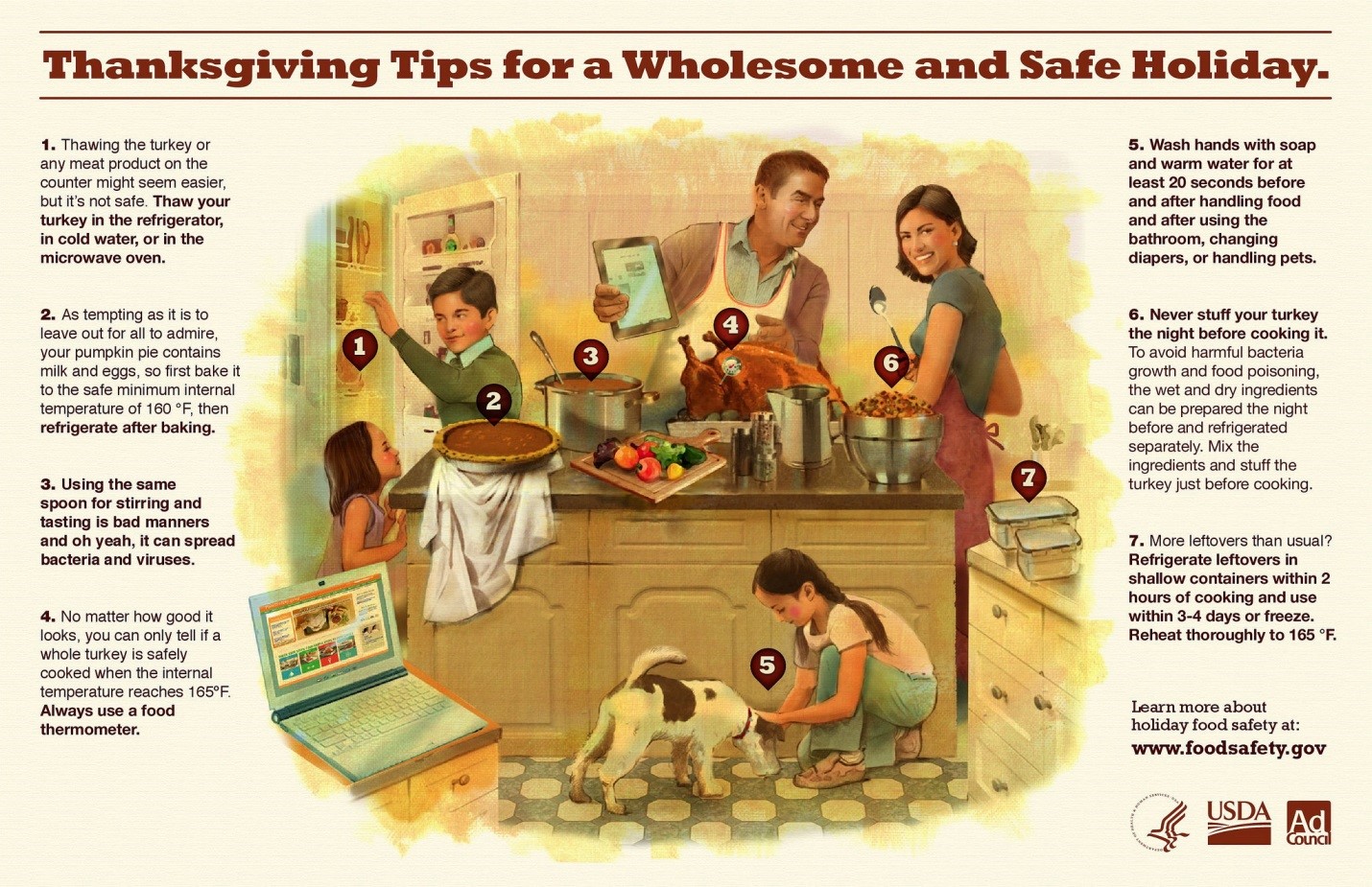
Tanya Brown is a public affairs specialist with the Food Safety Education Staff at the U.S. Department of Agriculture (USDA) Food Safety and Inspection Service.
More than 46 million turkeys are eaten on Thanksgiving Day. For many people, this is by far the largest—and most stressful—meal of the year. No one wants their guests to get sick from a Thanksgiving meal, especially if someone has cancer. 
“We receive an increase of calls on the USDA Meat and Poultry Hotline around Thanksgiving because people are stressed and have a lot of questions about thawing and cooking their turkey,” said Marianne Gravely, senior technical specialist at USDA Food Safety and Inspection Service. “Since this is such a large family feast, we want to make sure people prepare their food in a safe manner to avoid foodborne illness.”
Follow these tips and use these resources to help make your Thanksgiving feast a safe and healthy one.
-
Fresh or frozen? If you plan to buy a fresh turkey, purchase it 1 to 2 days before you plan to cook it. Keep it in the refrigerator until you are ready to cook. Do not buy fresh, pre-stuffed turkeys. Harmful bacteria that may be in the stuffing can quickly multiply.
Frozen turkeys should be thawed in the refrigerator. Allow 24 hours of thawing time for every 4 to 5 pounds of turkey. For example, if you purchase a 12- to 16-pound turkey, it will need 3 to 4 days to thaw in the refrigerator. However, a pre-stuffed frozen turkey should not be thawed. Follow the package directions and prepare it while it is still frozen.
-
Don’t wash the bird. According to the U.S. Food and Drug Administration, 68% of people wash their turkey before cooking. But did you know that the USDA does not recommended this? Washing raw meat or poultry can splash bacteria around the sink, across countertops, and into already prepared foods. If you cook the turkey to the correct internal temperature (165°F/74°C), any bacteria will be killed, making washing an unnecessary step.
The exception to this rule is brining. When rinsing brine off a turkey, remove all other food or objects from the sink, layer the area with paper towels, and use a slow stream of water to avoid splashing.
-
Use a food thermometer. The only way to know if your turkey (or any meat, poultry, or seafood) is fully cooked is to check its internal temperature with a food thermometer. A whole turkey should be checked in 3 locations: the innermost part of the thigh, the innermost part of the wing, and the thickest part of the breast. Your thermometer should register 165°F (74°C) in all 3 places.
-
Make room for leftovers. A day or 2 before the holiday, be sure to clear out any old food that is taking up space in your refrigerator. If you aren’t sure if it’s still good to eat, download the USDA’s Foodkeeper app (available for Apple and Android devices). The app provides storage times for more than 400 food items. Once your refrigerator is clear, you will have room to store all of those Thanksgiving leftovers. Do not leave leftovers on the table or countertop for people to graze, because food will enter into the danger zone (temperatures between 40°F/4°C and 140°F/60°C), where bacteria multiply rapidly. Instead, place food in shallow containers and place them in the refrigerator.
Have other questions about your Thanksgiving meal? Call the USDA Meat & Poultry Hotline at 1-888-MPHOTLINE (1-888-674-6854) or email mphotline.fsis@usda.gov. You can also chat live with a USDA food safety specialist at AskUSDA, available from 10 a.m. to 6 p.m. Eastern Time, Monday through Friday, in English or Spanish. If you need help on Thanksgiving Day, the Meat and Poultry Hotline is available from 8 a.m. to 2 p.m. Eastern Time.
- Thanwing the turkey or any meat product on the counter might seem easier, but it's not safe. Thaw your turkey in the refrigerator, in cold water, or in the microwave oven.
- As tempting as it is to leave out for all to admire, your pumpkin pie contains milk and eggs, so first bake it to the safe minimum temperature of 160 degrees Fahrenheit, then refrigerate after baking.
- Using the same spoon for stirring and tasting is bad manners and oh yeah, it can spread bacteria and viruses.
- No matter how good it looks, you can only tell if a whole turkey is safely cooked when the internal temperature reaches 165 degrees Fahrenheit. Always use a food thermometer.
- Wash hands with soap and warm water for at least 20 seconds before and after handling food and after using the bathroom, changing diapers, or handling pets.
- Never stuff your turkey the night before cooking it. To avoid harmful bacteria growth and food poisoning, the wet and dry ingredients can be prepared the night before and refrigerated separately. Mix the ingredients and stuff the turkey just before cooking.
- More leftovers than usual? Refrigerate leftovers in shallow containers within 2 hours of cooking, and use within 3-4 days or freeze. Reheat thoroughly to 165 degrees Fahrenheit.

